Abstract
Laboratory experiments were carried out to study the development of Bulinus truncatus and the larval stages of Schistosoma haematobium after the snails had been exposed to various numbers of miracidia. The results showed: (1) that in the cercarial-incubation period the growth and survival rate of snails was not influenced by the development of the larval stages of S. haematobium, but that in the cercaria-shedding period the life-span of the infected snails was shorter than that of the non-infected controls; (2) that reduction of oviposition was proportional to the exposure of miracidia; (3) that the length of the cercarial-incubation period in snails was inversely proportional to the exposure number of miracidia; (4) that all the snails exposed to 20 miracidia (the maximum exposure number used) shed cercariae; (5) that snails exposed to one miracidium each shed fewer cercariae than those exposed to two or more miracidia each; and (6) that the peak of cercaria-shedding occurred 40 to 90 days after the shedding had started, varying in different groups.
Full text
PDF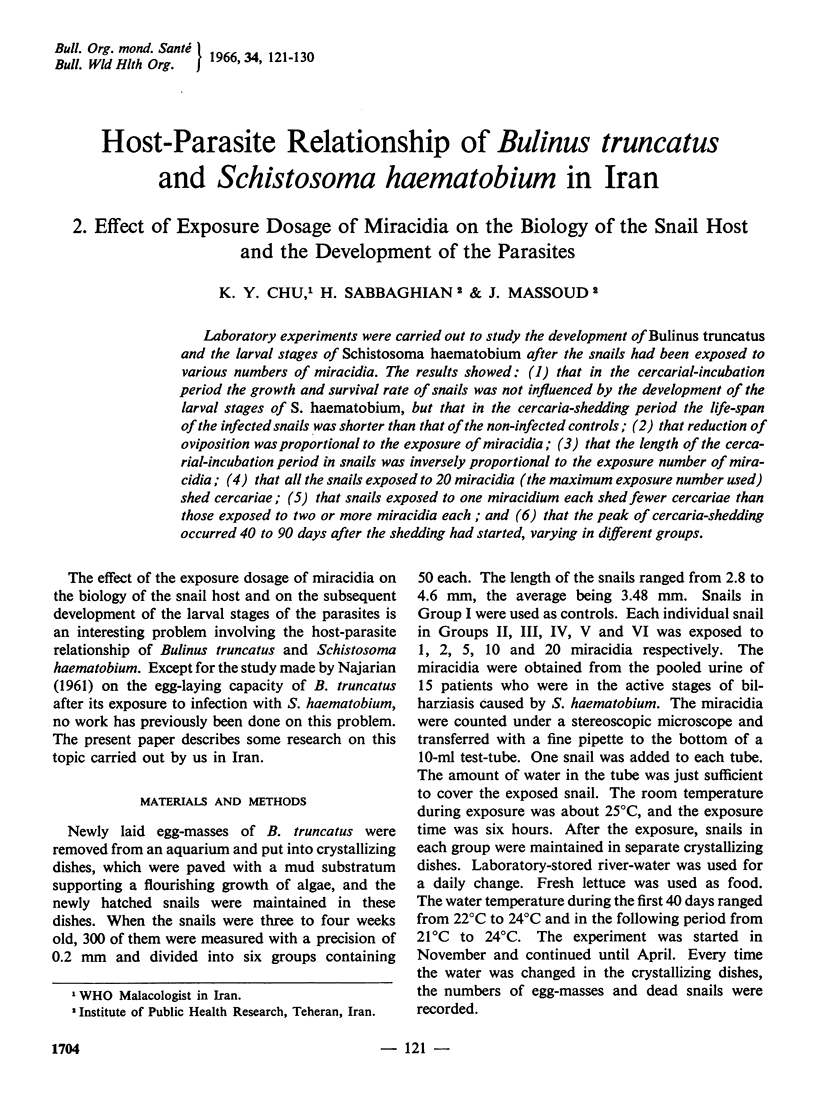
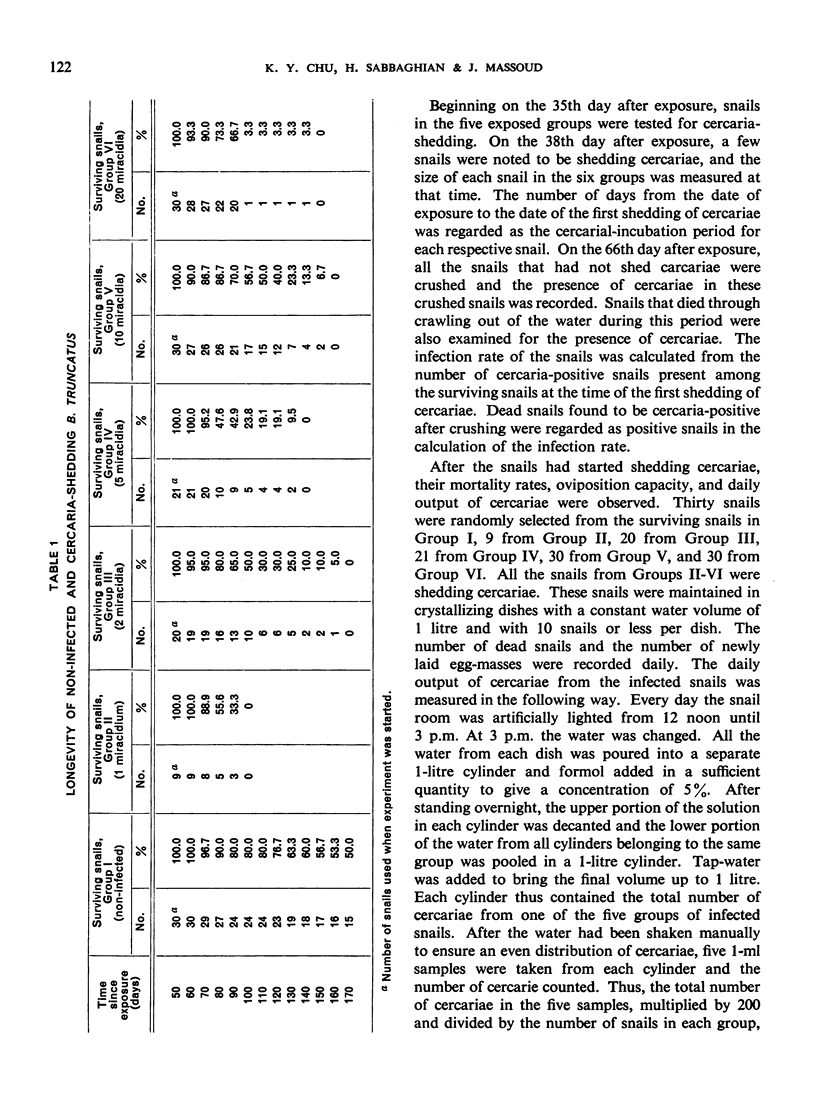
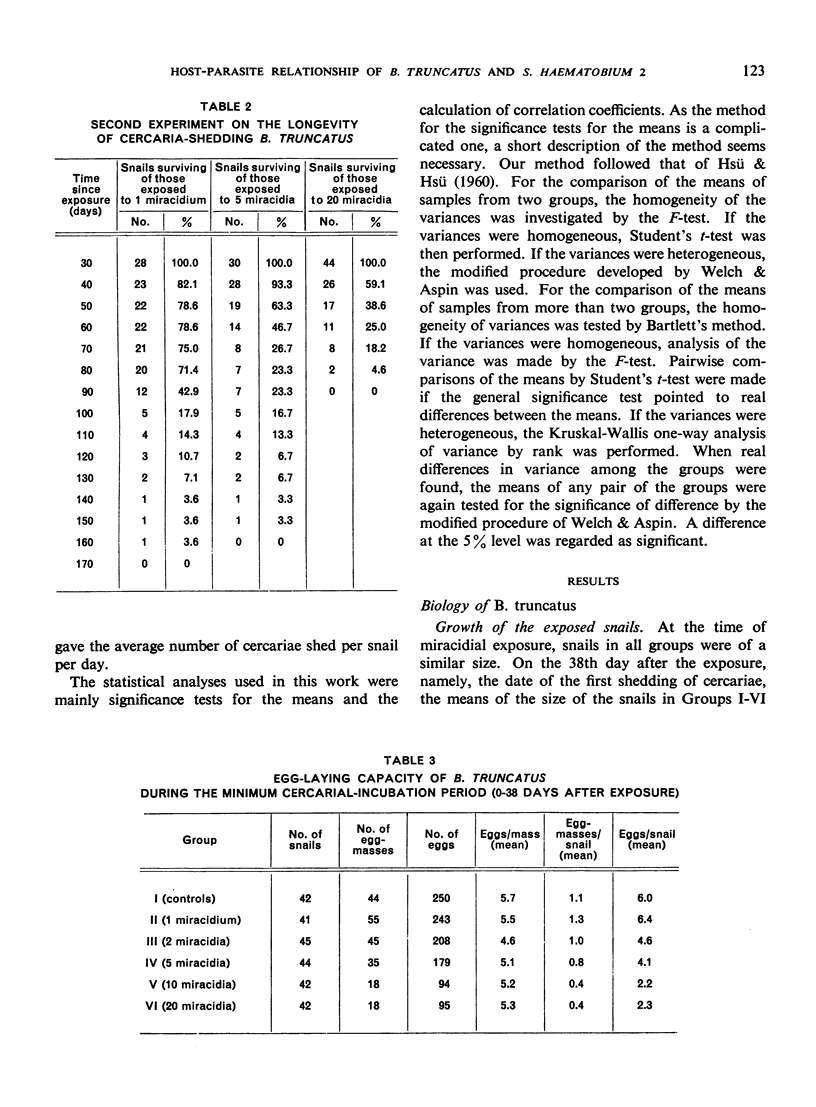
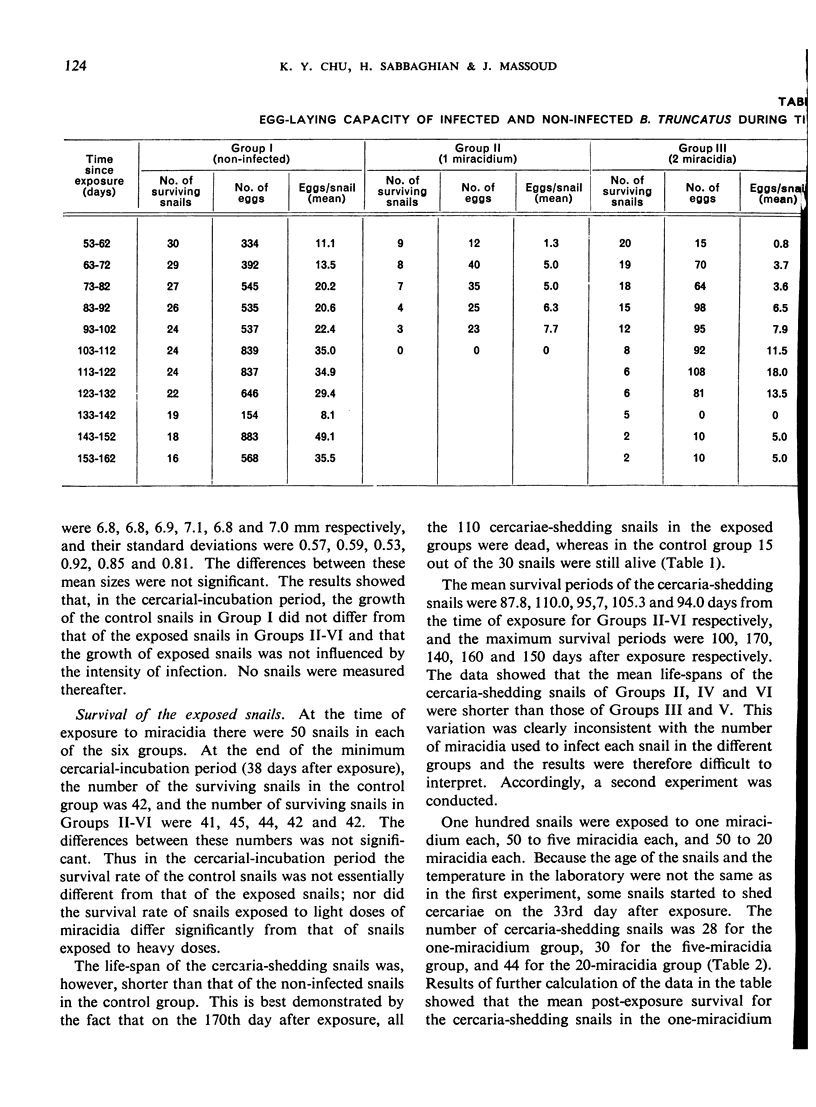
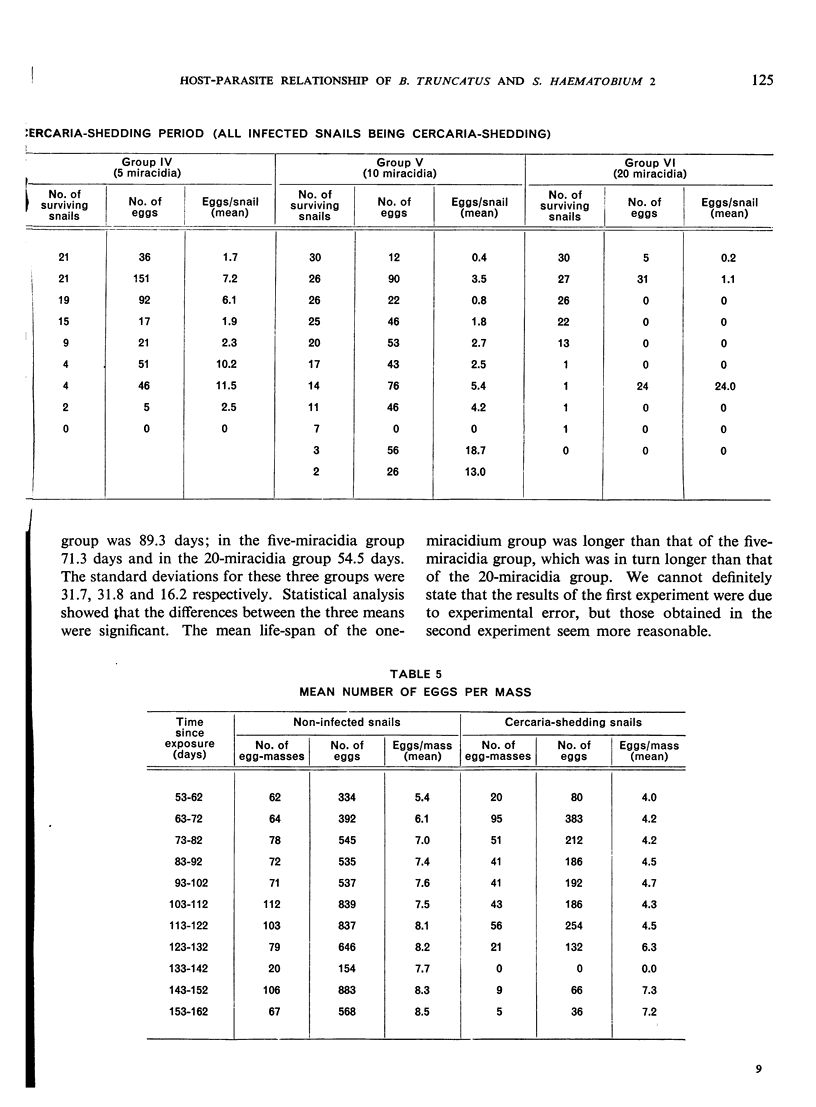
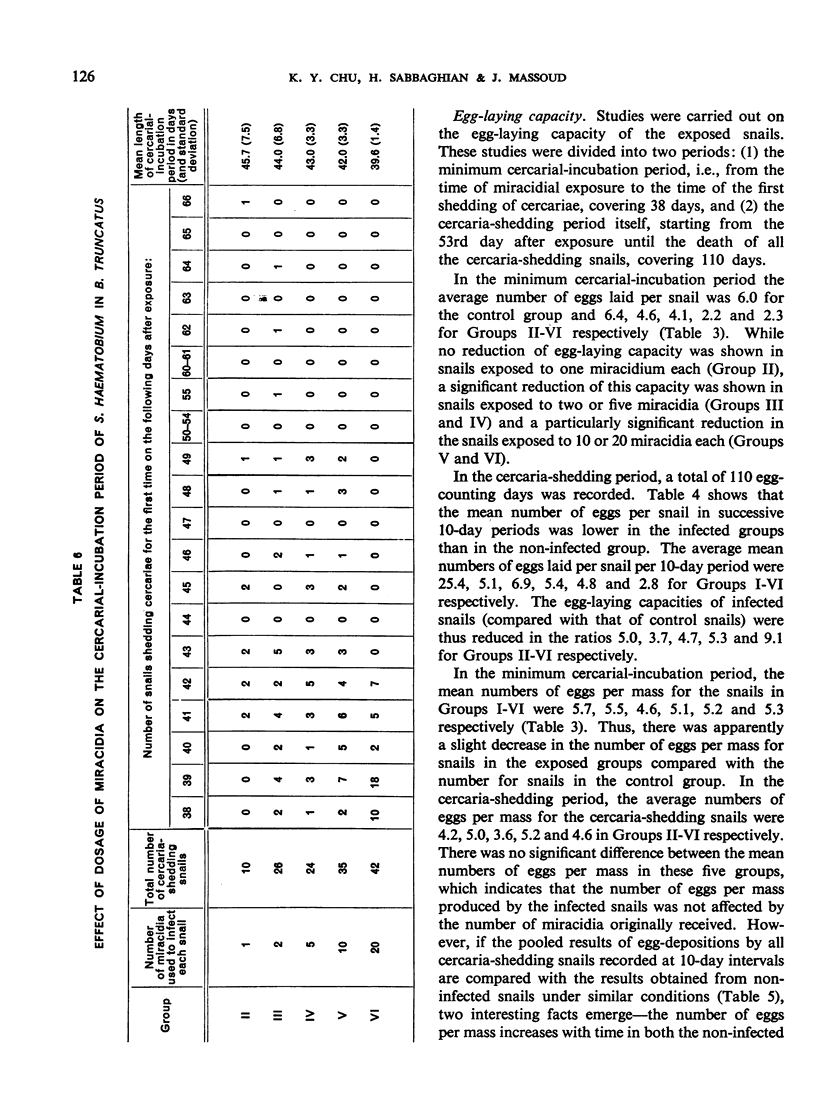
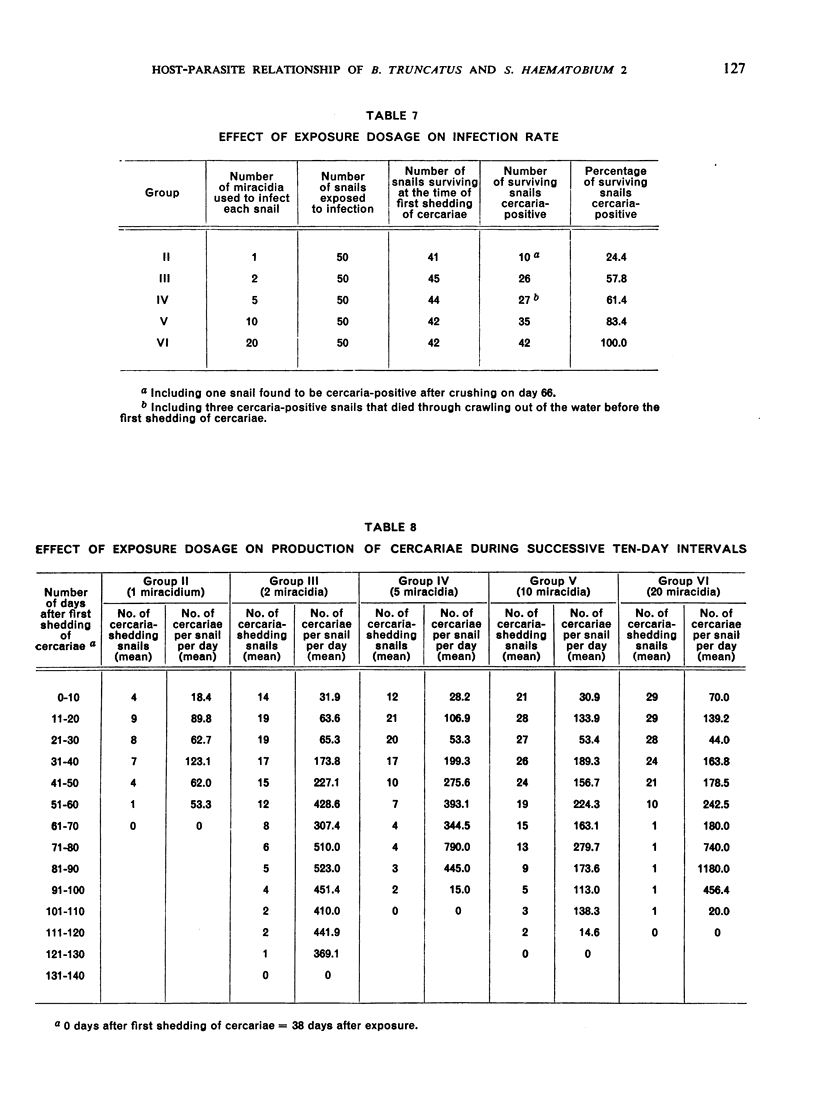
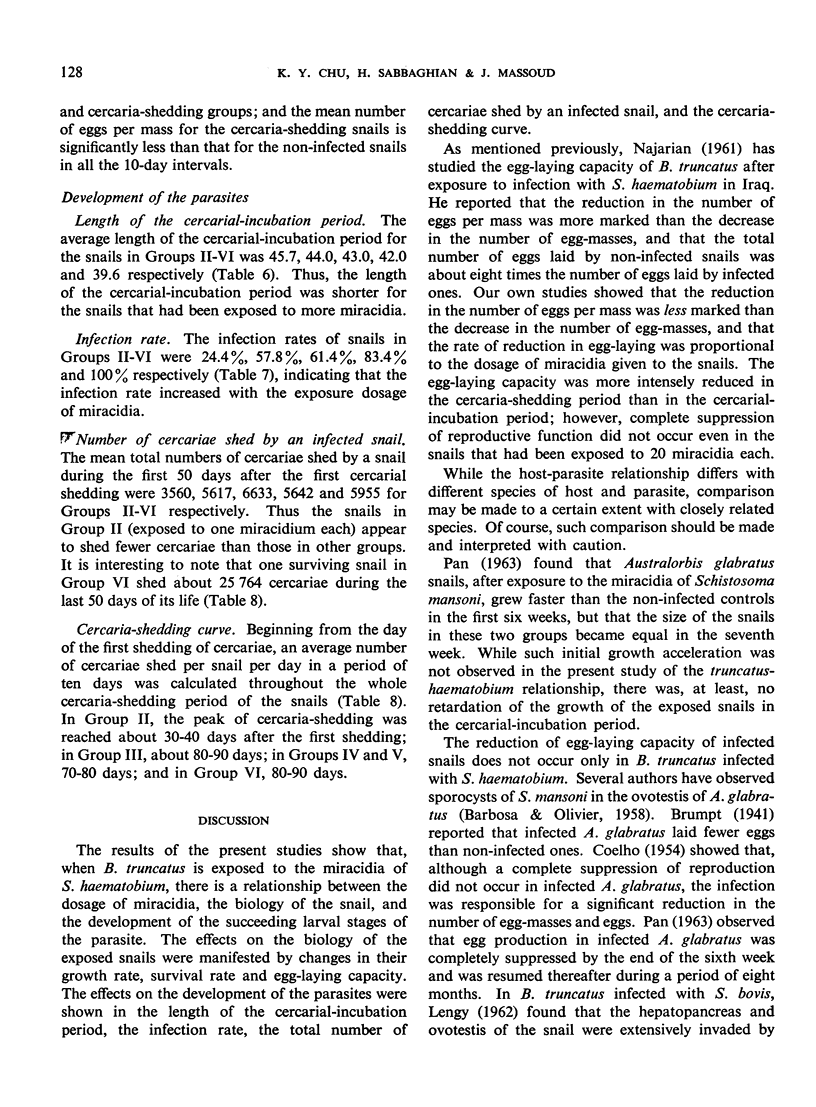
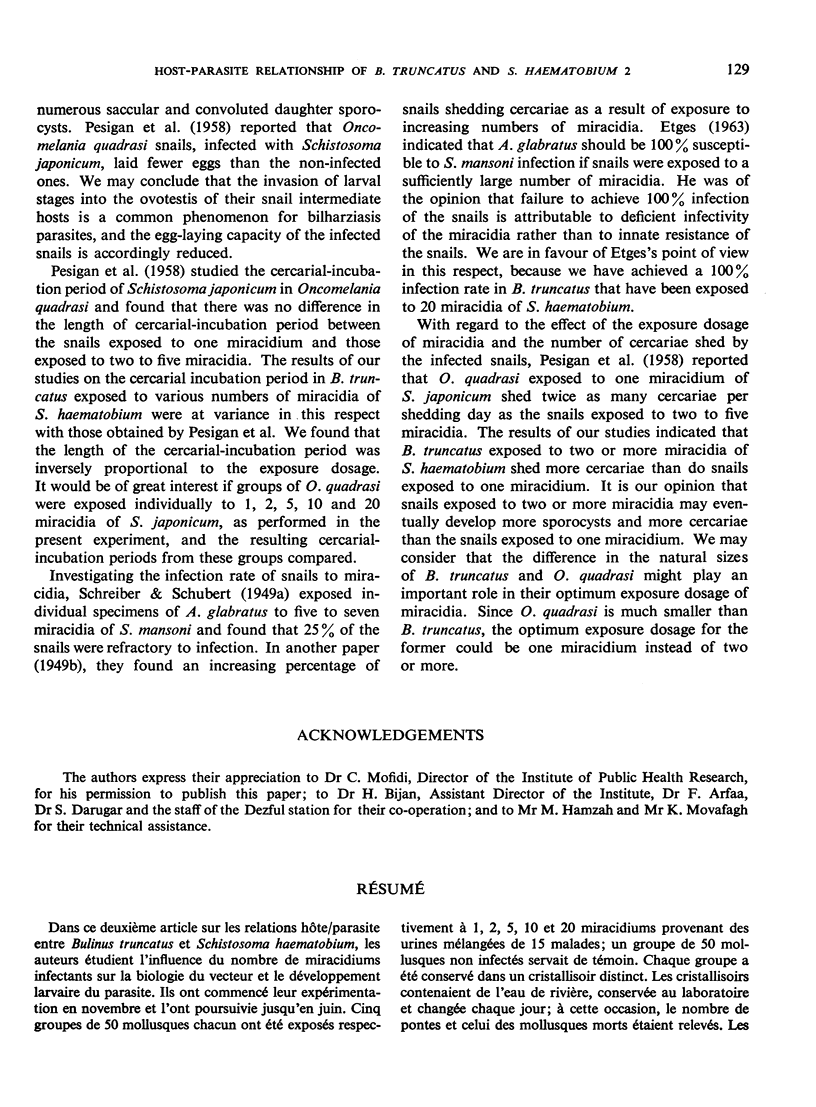
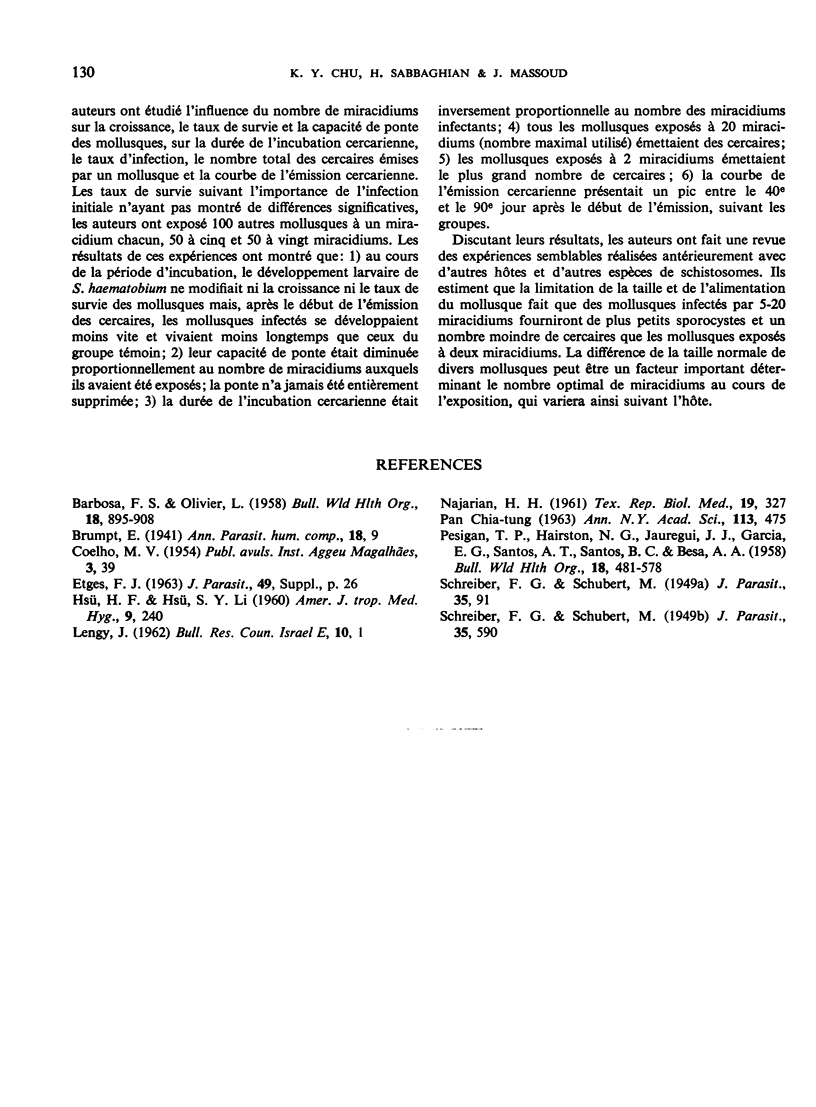
Selected References
These references are in PubMed. This may not be the complete list of references from this article.
- BARBOSA F. S., OLIVIER L. Studies on the snail vectors of bilharziasis mansoni in North-eastern Brazil. Bull World Health Organ. 1958;18(5-6):895–908. [PMC free article] [PubMed] [Google Scholar]
- HSU H. F., HSU S. Y. Distribution of eggs of different geographic strains of Schistosoma japonicum in the viscera of infected hamsters and mice. Am J Trop Med Hyg. 1960 May;9:240–247. [PubMed] [Google Scholar]
- NAJARIAN H. H. Egg-laying capacity of the small Bulinus truncatus in relation to infection with Schistosoma haematobium. Tex Rep Biol Med. 1961;19:327–331. [PubMed] [Google Scholar]
- PAN C. T. GENERALIZED AND FOCAL TISSUE RESPONSES IN THE SNAIL, AUSTRALORBIS GLABRATUS, INFECTED WITH SCHISTOSOMA MANSONI. Ann N Y Acad Sci. 1963 Dec 30;113:475–485. doi: 10.1111/j.1749-6632.1963.tb40684.x. [DOI] [PubMed] [Google Scholar]
- PESIGAN T. P., HAIRSTON N. G., JAUREGUI J. J., GARCIA E. G., SANTOS A. T., SANTOS B. C., BESA A. A. Studies on Schistosoma japonicum infection in the Philippines. 2. The molluscan host. Bull World Health Organ. 1958;18(4):481–578. [PMC free article] [PubMed] [Google Scholar]
- SCHREIBER F. G., SCHUBERT M. Experimental infection of the snail Australorbis glabratus with the trematode Schistosoma mansoni and the production of cercariae. J Parasitol. 1949 Feb;35(1):91–100. [PubMed] [Google Scholar]
- SCHREIBER F. G., SCHUBERT M. Results of exposure of the snail Australorbis glabratus to varying numbers of miracidia of Schistosoma mansoni. J Parasitol. 1949 Dec;35(6):590–592. [PubMed] [Google Scholar]


